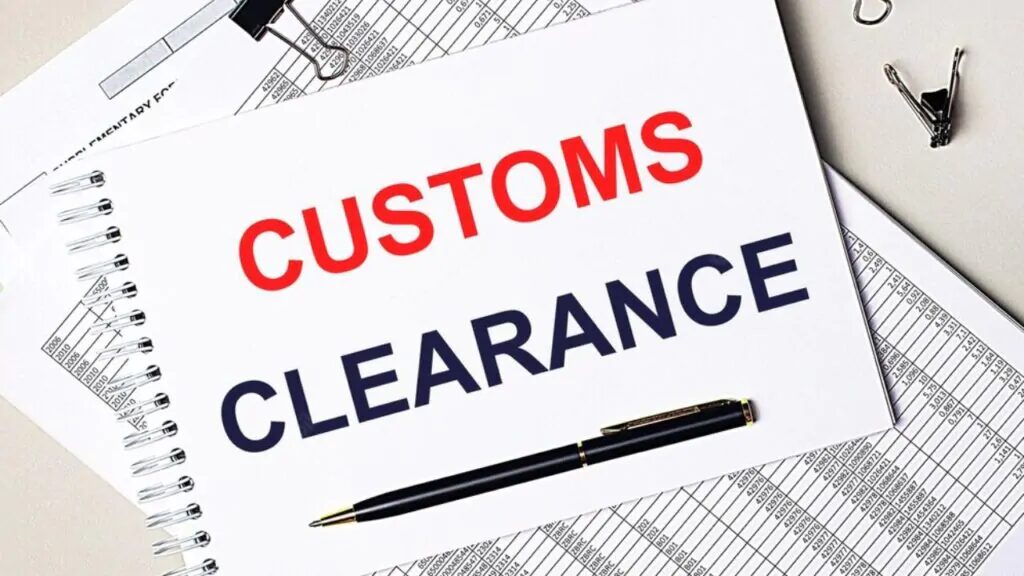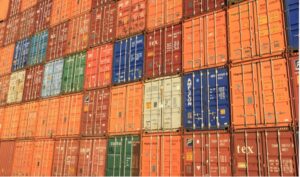cheapest way to ship from china to australia
Shipping goods from China to Australia is a common and essential part of many businesses, especially in the e-commerce sector. However, shipping costs can be a significant expense that affects the profitability and competitiveness of your products. Therefore, finding the cheapest and most reliable shipping solutions is crucial for your success.
In this article, we will explore the factors that affect shipping costs, compare the different shipping methods available, and share some tips on how to find the cheapest shipping rates. We will also discuss how to negotiate with shipping providers for better rates, use freight forwarding services to save money on shipping, and consider the customs and import taxes involved. Finally, we will present some case studies of real-life examples of businesses that have saved money on shipping from China to Australia.
Factors that Affect Shipping Costs

The cost of shipping from China to Australia depends on several factors, such as:
cheapest way to ship from china to australia
- The weight and volume of your goods: The heavier and larger your goods are, the more expensive the shipping will be. This is because shipping providers charge by the actual weight or the dimensional weight (also known as volumetric weight), whichever is higher. The dimensional weight is calculated by multiplying the length, width, and height of your package and dividing it by a factor that varies depending on the shipping method and provider.
- The distance and destination of your shipment: The farther and more remote your destination is, the higher the shipping cost will be. This is because shipping providers have to cover more fuel, labor, and infrastructure costs to deliver your goods. For example, shipping to Sydney or Melbourne will be cheaper than shipping to Perth or Darwin, as they are closer to China and have more frequent and direct shipping routes.
- The shipping method and provider you choose: There are different shipping methods and providers available, each with their own advantages, disadvantages, and pricing. We will compare them in the next section.
- The season and demand of your shipment: The shipping cost can fluctuate depending on the season and demand of your shipment. For example, shipping during peak seasons such as Christmas, Chinese New Year, or Black Friday can be more expensive and slower than shipping during off-peak seasons, as there is more competition and congestion for shipping space and resources. Similarly, shipping during emergencies, disasters, or pandemics can also increase the shipping cost and delay the delivery time, as there may be disruptions and restrictions in the supply chain.
- The value and nature of your goods: The value and nature of your goods can also affect the shipping cost, as they may require additional fees, insurance, or documentation. For example, if your goods are worth more than a certain threshold, you may have to pay a customs duty or a goods and services tax (GST) when importing them into Australia. If your goods are fragile, hazardous, or perishable, you may have to pay extra for special handling, packaging, or storage. If your goods are restricted or prohibited, you may have to obtain a permit or a license to ship them.
Comparison of Different Shipping Methods

There are three main shipping methods that you can use to ship from China to Australia: air freight, sea freight, and courier services. Each of them has its own pros and cons, and the best one for you depends on your budget, time, and needs. Here is a brief overview of each shipping method:
cheapest way to ship from china to australia
- Air freight: Air freight is the fastest and most reliable shipping method, as it can deliver your goods within a few days or even hours. However, it is also the most expensive shipping method, as it charges by the weight of your goods and has high fuel and airport fees. Air freight is best suited for urgent, high-value, or low-volume shipments, such as samples, prototypes, or spare parts.
- Sea freight: Sea freight is the cheapest and most eco-friendly shipping method, as it charges by the volume of your goods and has low fuel and port fees. However, it is also the slowest and least predictable shipping method, as it can take weeks or even months to deliver your goods, depending on the weather, traffic, and customs clearance. Sea freight is best suited for non-urgent, low-value, or high-volume shipments, such as bulk orders, raw materials, or furniture.
- Courier services: Courier services are the most convenient and flexible shipping method, as they offer door-to-door delivery, online tracking, and customer service. However, they are also the most variable and complex shipping method, as they use a combination of air and road transport, and have different rates and surcharges depending on the provider, destination, and service level. Courier services are best suited for small, lightweight, or time-sensitive shipments, such as documents, parcels, or gifts.
Tips for Finding the Cheapest Shipping Rates

To find the cheapest shipping rates from China to Australia, you can follow these tips:
- Compare different shipping methods and providers: You can use online platforms, tools, or brokers to compare the prices, services, and reviews of different shipping methods and providers. You can also contact them directly and ask for quotes, discounts, or promotions. Some of the popular platforms, tools, and brokers that you can use are:
- Freightos: A global online marketplace that connects shippers and freight forwarders, and provides instant quotes, booking, and tracking for air and sea freight.
- Shipa Freight: A digital freight forwarding platform that offers online quotes, booking, and payment for air and sea freight, and provides 24/7 customer support.
- Easyship: A cloud-based shipping software that integrates with e-commerce platforms and provides access to over 250 courier services, and calculates the best rates, taxes, and duties for each shipment.
- Pack and Send: An Australian-based courier and freight service that offers domestic and international delivery, packaging, and insurance for a variety of goods, and provides online quotes and booking.
- Freight Seek: An Australian-based freight broker that connects shippers and transporters, and provides free quotes and booking for road, rail, air, and sea freight.
- Optimize your packaging and labeling: You can reduce your shipping cost by optimizing your packaging and labeling, such as:
- Using the smallest and lightest packaging possible, while ensuring adequate protection and cushioning for your goods.
- Using standard-sized boxes or pallets that fit the dimensions and weight limits of your shipping method and provider.
- Consolidating your goods into fewer and larger packages, rather than many and smaller packages, to save on the number of shipments and fees.
- Using recyclable or reusable materials, such as cardboard, paper, or biodegradable plastic, to save on the packaging cost and environmental impact.
- Printing clear and accurate labels that include the sender’s and receiver’s details, the description and value of the goods, the shipping method and provider, and any special instructions or warnings.
- Attaching the necessary documents, such as the commercial invoice, the packing list, the bill of lading, or the air waybill, to the outside of your package or pallet, and keeping copies for yourself.
- Plan ahead and avoid peak seasons: You can save money on shipping by planning ahead and avoiding peak seasons, such as:
- Booking your shipment in advance, rather than at the last minute, to secure the best rates and availability of your shipping method and provider.
- Shipping your goods during off-peak seasons, such as January, February, or September, rather than during peak seasons, such as December, March, or October, to avoid the higher demand and prices of shipping space and resources.
- Shipping your goods during weekdays, rather than during weekends or public holidays, to avoid the extra fees and delays of shipping services.
How to Negotiate with Shipping Providers for Better Rates

To negotiate with shipping providers for better rates, you can use these strategies:
cheapest way to ship from china to australia
- Leverage your volume and loyalty: You can negotiate for lower rates or better terms by leveraging your volume and loyalty, such as:
- Shipping more goods or more frequently with the same shipping provider, and asking for a volume discount or a long-term contract.
- Shipping less goods or less frequently with the same shipping provider, and asking for a loyalty discount or a flexible contract.
- Shipping with multiple shipping providers, and asking for a competitive price match or a better service.
- Ask for value-added services or benefits: You can negotiate for value-added services or benefits, such as:
- Free or discounted packaging, insurance, or storage.
- Faster or guaranteed delivery time or date.
- Easier or simpler documentation or payment process.
- More or better online tracking or customer support.
- Be polite and professional: You can negotiate more effectively by being polite and professional, such as:
- Building a rapport and trust with your shipping provider, and expressing your appreciation and satisfaction with their service.
- Being clear and realistic about your expectations and needs, and listening and understanding their perspective and constraints.
- Being flexible and willing to compromise, and finding a win-win solution that benefits both parties.
Using Freight Forwarding Services to Save Money on Shipping

A freight forwarder is a company that acts as an intermediary between you and the shipping provider, and handles the logistics and paperwork of your shipment. Using a freight forwarder can help you save money on shipping, as they can:
- Offer lower rates and better terms: A freight forwarder can offer lower rates and better terms than the shipping provider, as they can:
- Negotiate with the shipping provider on your behalf.
- Access a wider network and variety of shipping providers: A freight forwarder can access a wider network and variety of shipping providers than you can, as they can:
- Work with multiple shipping providers, both local and international, and choose the best one for your shipment based on the price, service, and availability.
- Combine your shipment with other shippers’ shipments, and take advantage of the economies of scale and lower rates of bulk shipping.
- Handle the customs clearance and documentation for your shipment, and avoid the hassle and fees of dealing with different authorities and regulations.
- Provide more expertise and support: A freight forwarder can provide more expertise and support than the shipping provider, as they can:
- Advise you on the best shipping method, provider, and route for your shipment, based on your budget, time, and needs.
- Monitor and track your shipment throughout the whole process, and update you on the status and location of your goods.
- Resolve any issues or problems that may arise during the shipping, such as delays, damages, or losses, and assist you with the claims or compensation process.
- However, using a freight forwarder also has some drawbacks, such as:
- Adding an extra layer of cost and complexity: Using a freight forwarder can add an extra layer of cost and complexity to your shipping, as you have to:
- Pay the freight forwarder’s fees and commissions, which may vary depending on the service and provider they use.
- Communicate and coordinate with the freight forwarder, rather than directly with the shipping provider, which may cause some confusion or misunderstanding.
- Rely on the freight forwarder’s reputation and reliability, which may not be as good or consistent as the shipping provider’s.
- Losing some control and visibility: Using a freight forwarder can also mean losing some control and visibility over your shipping, as you have to:
- Trust the freight forwarder to choose the best shipping method, provider, and route for your shipment, which may not always match your preferences or expectations.
- Depend on the freight forwarder’s online tracking and customer support systems, which may not be as accurate or responsive as the shipping provider’s.
- Accept the freight forwarder’s terms and conditions, which may not be as favorable or transparent as the shipping provider’s.
- Therefore, before using a freight forwarder, you should do some research and comparison, and find a reputable and reliable one that suits your needs and budget.
Considerations for Customs and Import Taxes

Another important factor that can affect your shipping cost from China to Australia is the customs and import taxes that you may have to pay when importing your goods into Australia. Customs and import taxes are fees that the Australian government charges on goods that are brought into the country, to protect the local industry, economy, and environment. They include:
cheapest way to ship from china to australia
- Customs duty: A tax that is based on the value and type of your goods, and the country of origin. The customs duty rate varies depending on the product category and the free trade agreement that Australia has with the exporting country. For example, if you import clothing from China, you may have to pay a customs duty of 5%, unless you have a certificate of origin that proves that the clothing is made in China, in which case you may be exempt from the duty under the China-Australia Free Trade Agreement (ChAFTA).
- Goods and services tax (GST): A tax that is based on the value of your goods, plus the customs duty and the transport and insurance costs. The GST rate is 10% for most goods, unless they are exempt or zero-rated. For example, if you import books from China, you may have to pay a GST of 10%, unless they are educational books, in which case they are zero-rated and you do not have to pay GST.
- Other fees and charges: There may be other fees and charges that you have to pay when importing your goods into Australia, such as:
- Processing fees: Fees that the Australian Border Force (ABF) or the Department of Agriculture, Water and the Environment (DAWE) charge for inspecting, clearing, and releasing your goods.
- Biosecurity fees: Fees that the DAWE charge for assessing and managing the biosecurity risks of your goods, such as pests, diseases, or contaminants.
- Anti-dumping and countervailing duties: Duties that the ABF charge for goods that are exported at a lower price than their normal value, or that are subsidized by the exporting country, and that cause or threaten to cause material injury to the Australian industry.
To calculate the customs and import taxes that you have to pay for your shipment, you can use the Duty and GST Calculator provided by the ABF. You can also use the Import Duty and GST Estimator provided by Pack and Send, which includes the transport and insurance costs.
To pay the customs and import taxes, you have to lodge an import declaration with the ABF, either online or by paper, and provide the necessary documents, such as the commercial invoice, the packing list, the bill of lading, or the air waybill. You can also use a customs broker or a freight forwarder to lodge the import declaration and pay the taxes on your behalf, for a fee.
cheapest way to ship from china to australia
To avoid or reduce the customs and import taxes, you can follow these tips:
- Check the product category and the country of origin of your goods: You can check the product category and the country of origin of your goods, and see if they are eligible for a lower or zero customs duty rate under the free trade agreements that Australia has with various countries, such as China, Japan, Korea, New Zealand, Singapore, Thailand, and the United States. You can also check the Working Tariff Document provided by the ABF, which lists the customs duty rates for different product categories and countries of origin. You may have to provide a certificate of origin or a declaration of origin to prove the origin of your goods.
- Check the value and the threshold of your goods: You can check the value and the threshold of your goods, and see if they are below the low value imported goods (LVIG) threshold, which is A$1,000. If your goods are below the LVIG threshold, you do not have to pay customs duty or GST, unless they are tobacco, alcohol, or certain types of goods that are subject to special rules. You can also check the Low Value Imported Goods page provided by the ABF, which explains the LVIG rules and exemptions. You may have to provide a self-assessed clearance (SAC) declaration to clear your goods.
- Check the nature and the purpose of your goods: You can check the nature and the purpose of your goods, and see if they are exempt or zero-rated for GST, or if they are eligible for a duty drawback or a refund. Some of the goods that are exempt or zero-rated for GST are:
- Goods that are exported or re-exported within 60 days of importation.
- Goods that are consumed or transformed in a customs bonded warehouse or a free trade zone.
- Goods that are used for diplomatic, consular, or defence purposes.
- Goods that are donated to a charitable organization.
- Goods that are personal or household effects.
- Goods that are educational, cultural, or medical.
Some of the goods that are eligible for a duty drawback or a refund are:
- Goods that are exported or re-exported within four years of importation.
- Goods that are damaged, destroyed, or stolen before delivery.
- Goods that are returned to the supplier or replaced by the supplier.
You can also check the GST on Imported Goods and the Duty Drawback and Refund pages provided by the ABF, which explain the GST and duty exemptions and refunds. You may have to provide a proof of export or a proof of destruction to claim a duty drawback or a refund.
Case Studies: Real-life Examples of Businesses Saving Money on Shipping
To illustrate how you can save money on shipping from China to Australia, here are some case studies of real-life examples of businesses that have done so:
cheapest way to ship from china to australia
- Case Study 1: An e-commerce business that sells clothing and accessories
- The business sources its products from various suppliers in China, and ships them to its customers in Australia using courier services, such as DHL, FedEx, or UPS.
- The business uses Easyship to compare and book the best courier services for each shipment, and to calculate and prepay the customs duty and GST for each shipment.
- The business also uses a freight forwarder to consolidate its shipments from different suppliers into one shipment, and to handle the customs clearance and documentation for the shipment.
- The business saves money on shipping by:
- Choosing the cheapest and most suitable courier service for each shipment, based on the weight, volume, value, and destination of the goods.
- Paying the customs duty and GST upfront, and avoiding the additional fees and delays of the courier service.
- Reducing the number and size of the shipments, and taking advantage of the lower rates and better terms.
- Case Study 2: A manufacturing business that produces furniture and home decor
- The business designs and manufactures its products in China, and ships them to its warehouse and showroom in Australia using sea freight.
- The business uses Freightos to compare and book the best sea freight services for each shipment, and to track and manage the shipment online.
- The business also uses a customs broker to lodge the import declaration and pay the customs duty and GST for each shipment, and to advise on the tariff classification and free trade agreement eligibility of the products.
- The business saves money on shipping by:
- Choosing the cheapest and most reliable sea freight service for each shipment, based on the volume, weight, value, and destination of the goods.
- Optimizing the packaging and labeling of the goods, and using standard-sized containers and pallets that fit the dimensions and weight limits of the sea freight service.
- Checking the product category and the country of origin of the goods, and using the ChAFTA certificate of origin to claim a lower or zero customs duty rate for the goods.
- Checking the value and the threshold of the goods, and using the LVIG exemption to avoid paying GST for the goods that are below A$1,000.
- Case Study 3: A consulting business that provides training and coaching services
- The business delivers its services to its clients in Australia using online platforms, such as Zoom, Skype, or Teams.
- The business sources its materials and equipment from various suppliers in China, and ships them to its office and home in Australia using courier services, such as TNT, EMS, or SF Express.
- The business uses Shipa Freight to compare and book the best courier services for each shipment, and to calculate and prepay the customs duty and GST for each shipment.
- The business saves money on shipping by:
- Choosing the most convenient and flexible courier service for each shipment, based on the size, weight, value, and urgency of the goods.
- Paying the customs duty and GST upfront, and avoiding the additional fees and delays of the courier service.
- Checking the nature and the purpose of the goods, and using the GST and duty exemptions and refunds for the goods that are exported, re-exported, donated, or returned.
Contact Us Now
cheapest way to ship from china to australia




